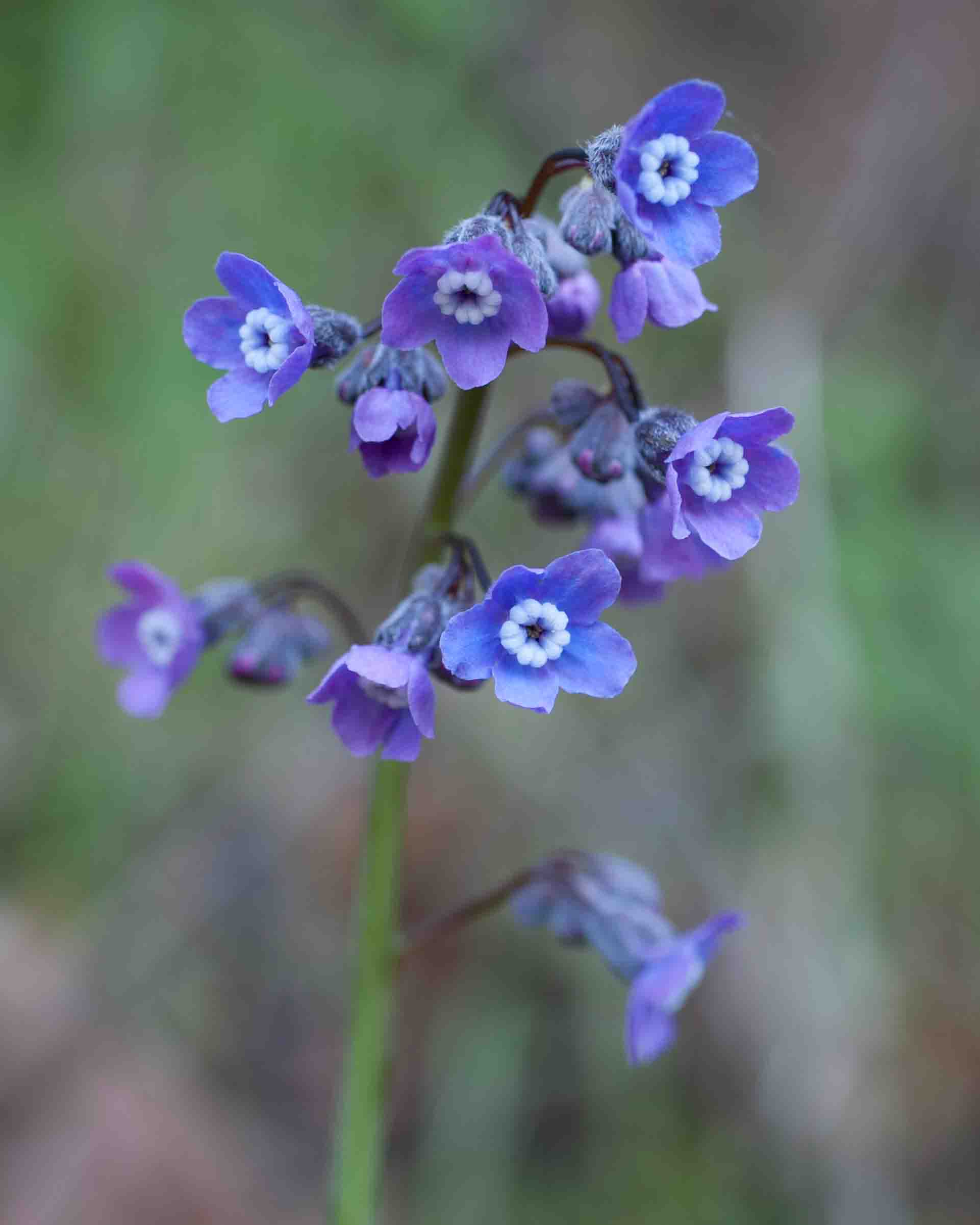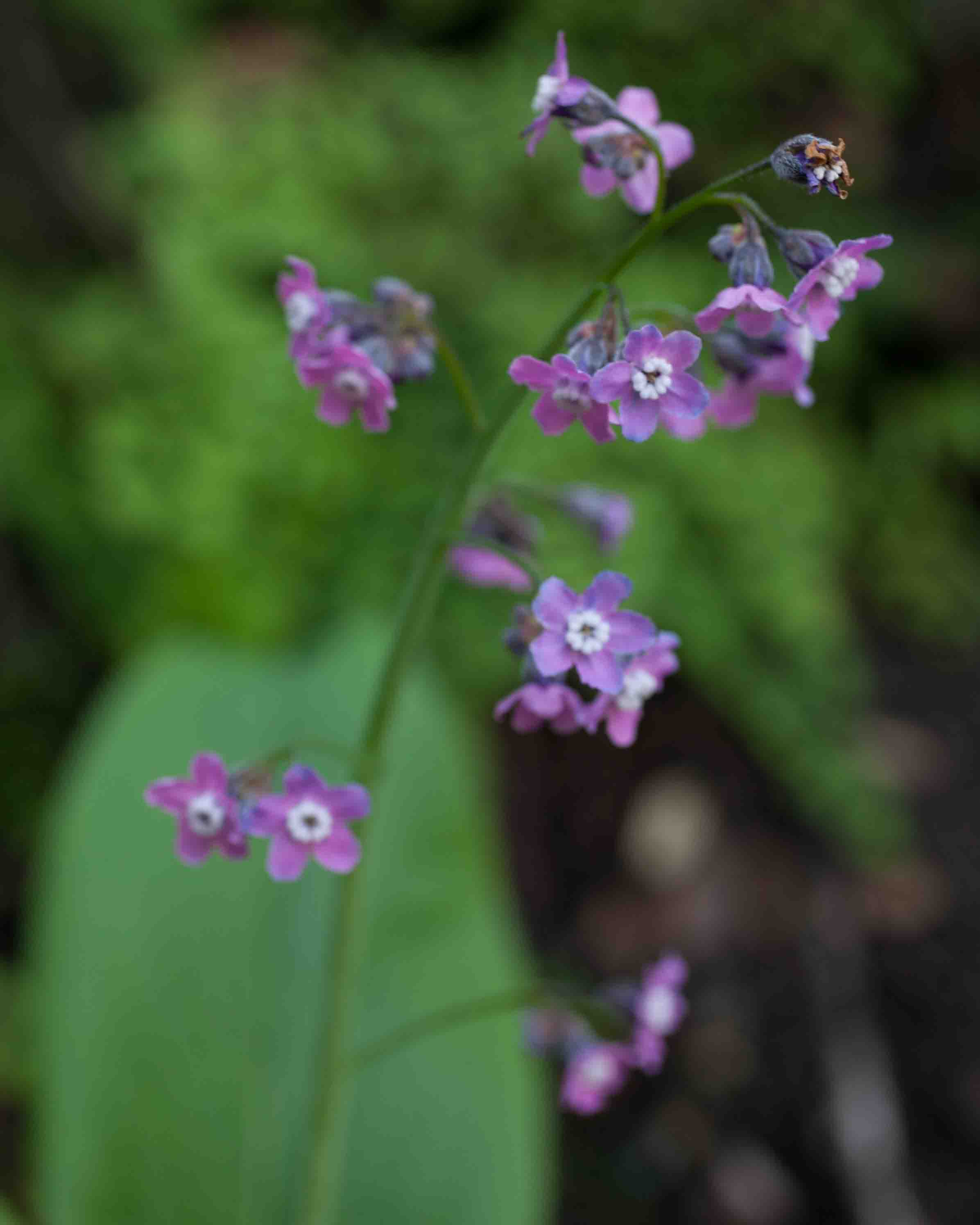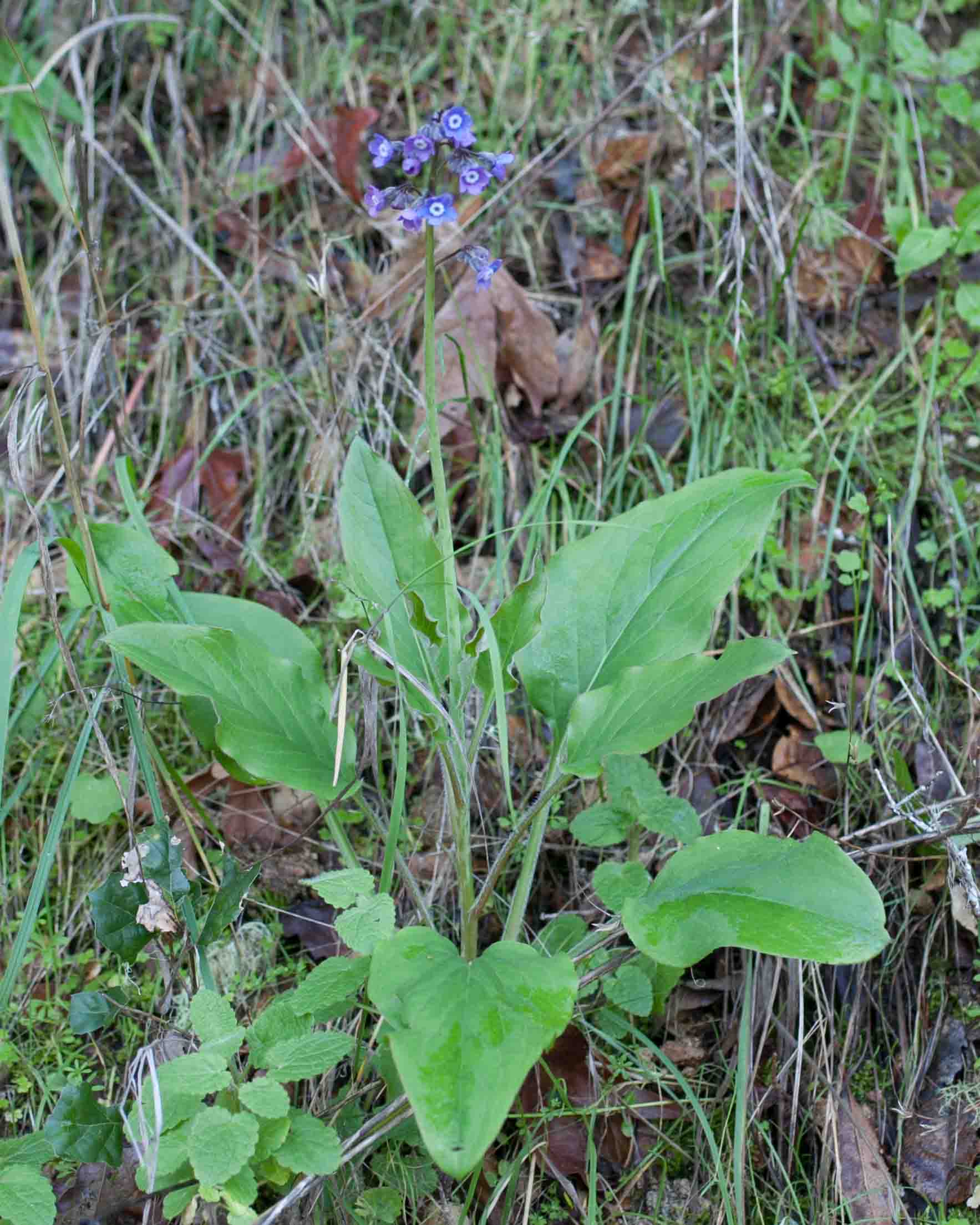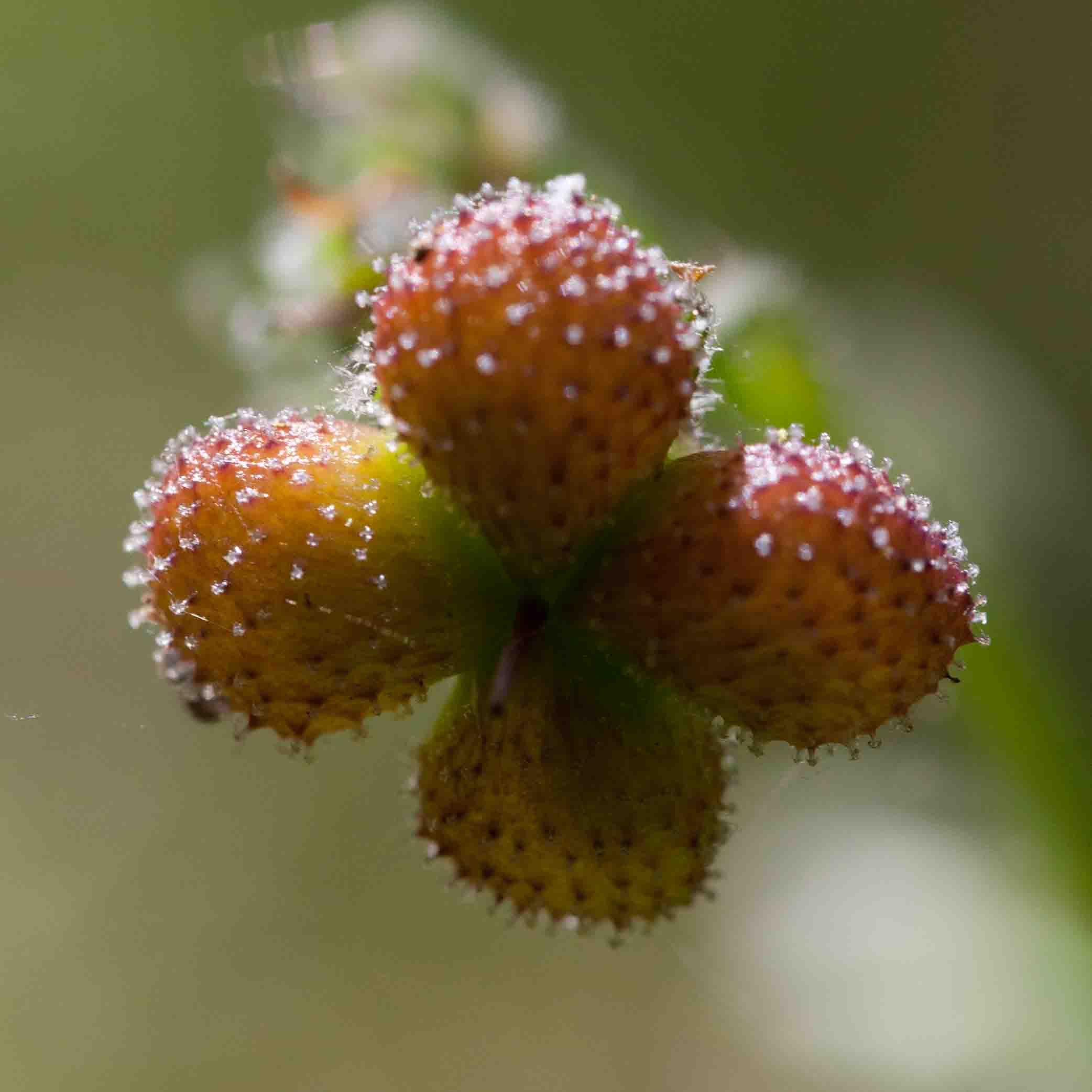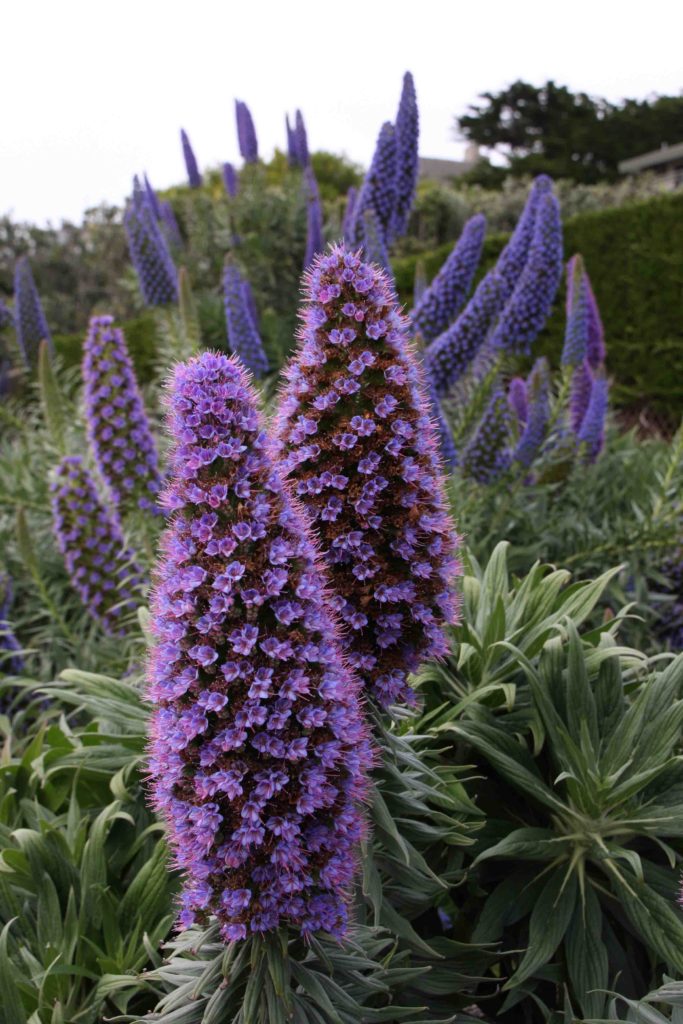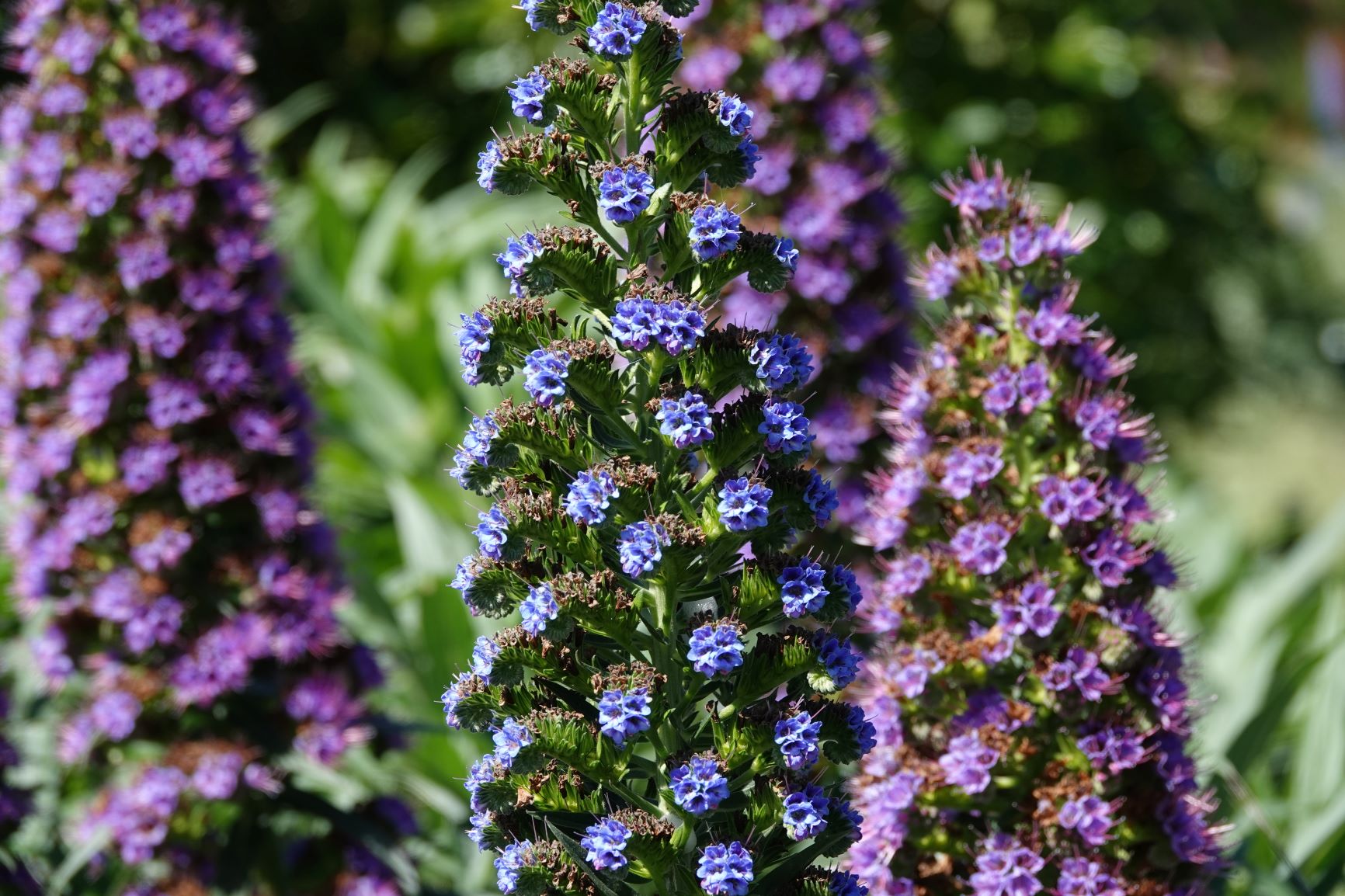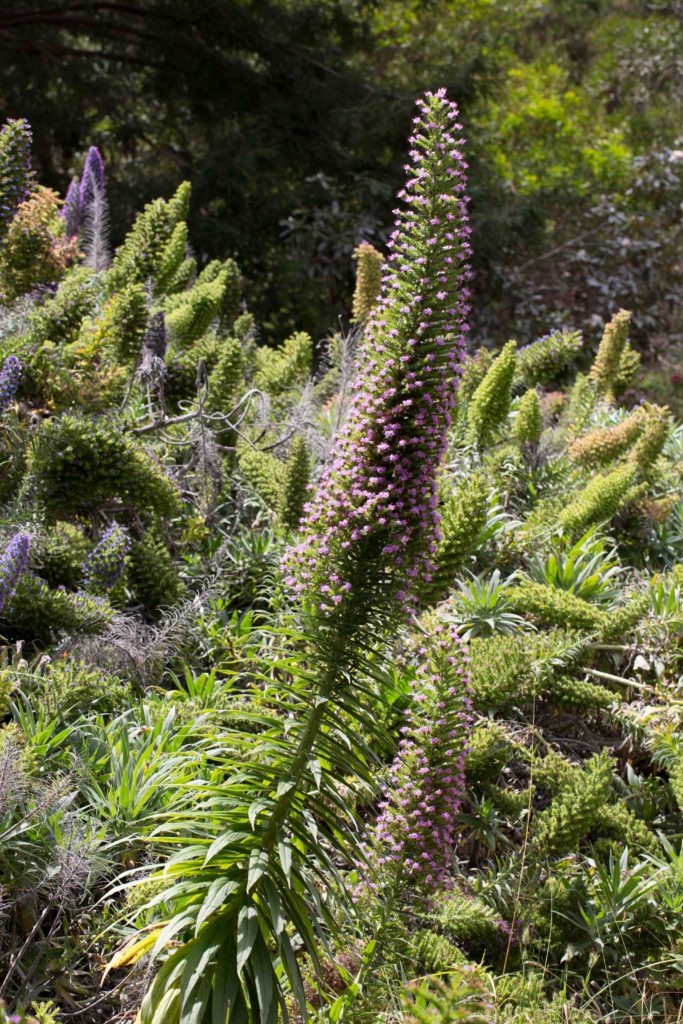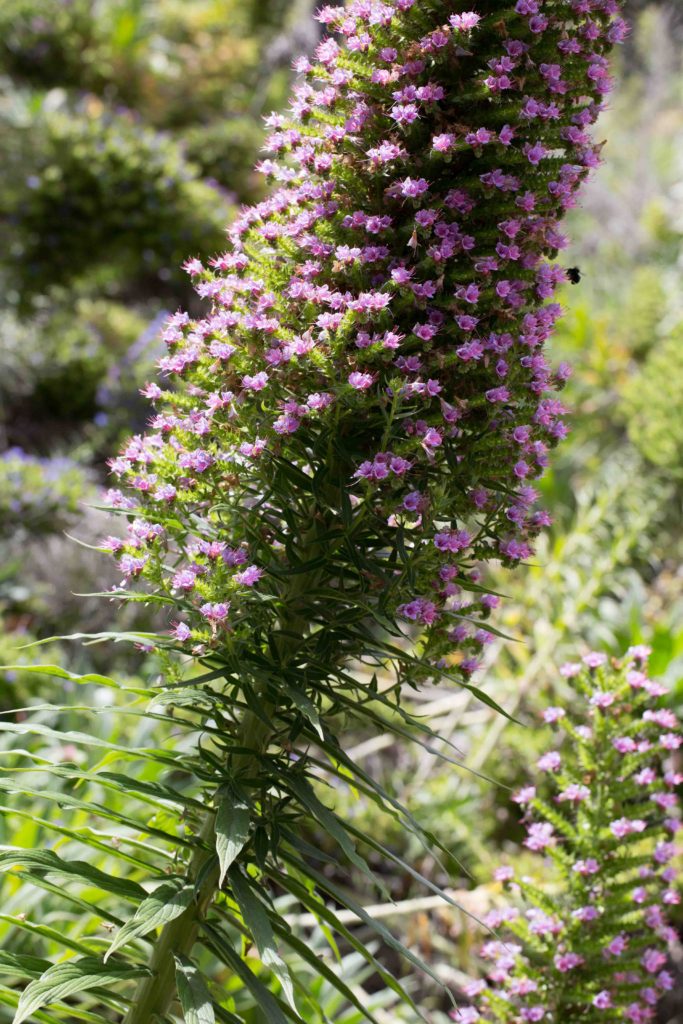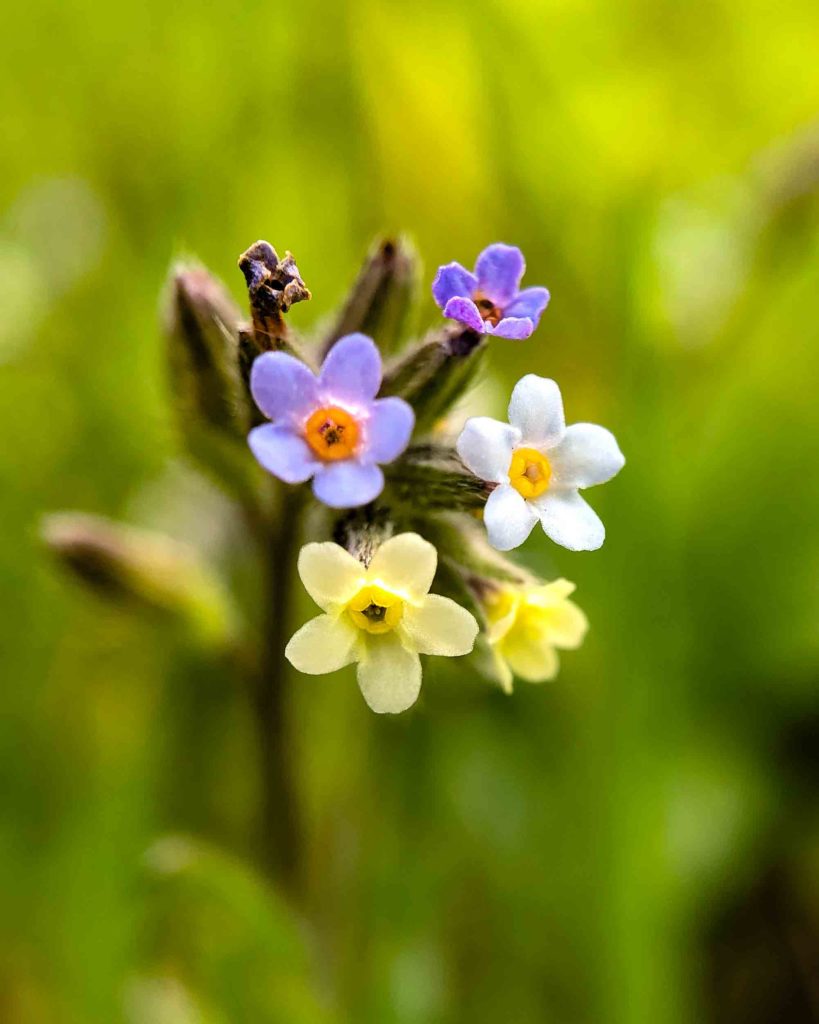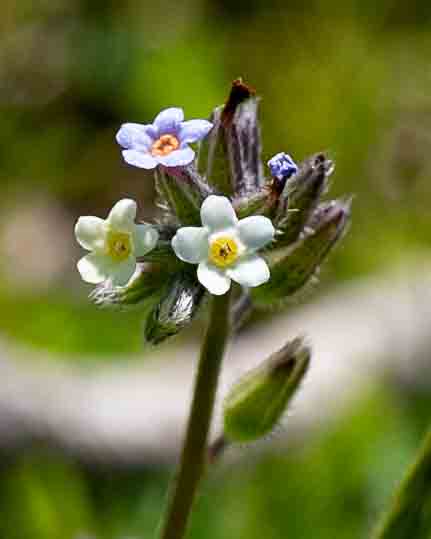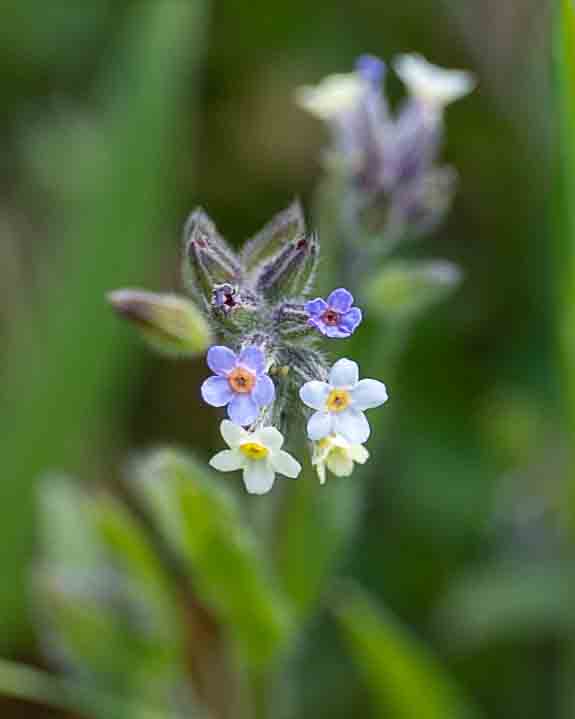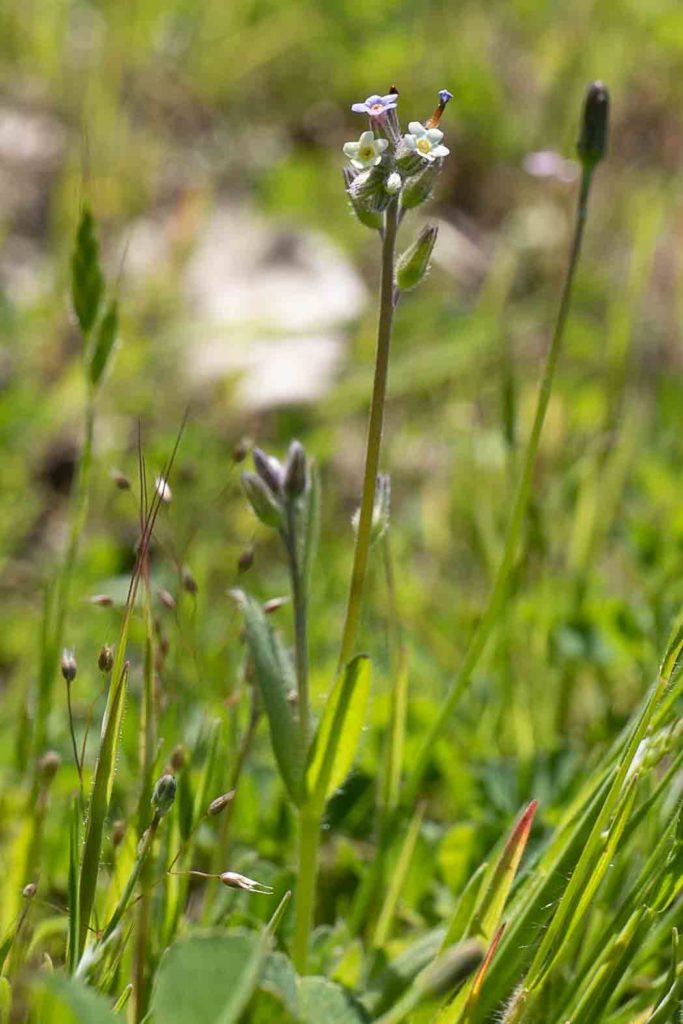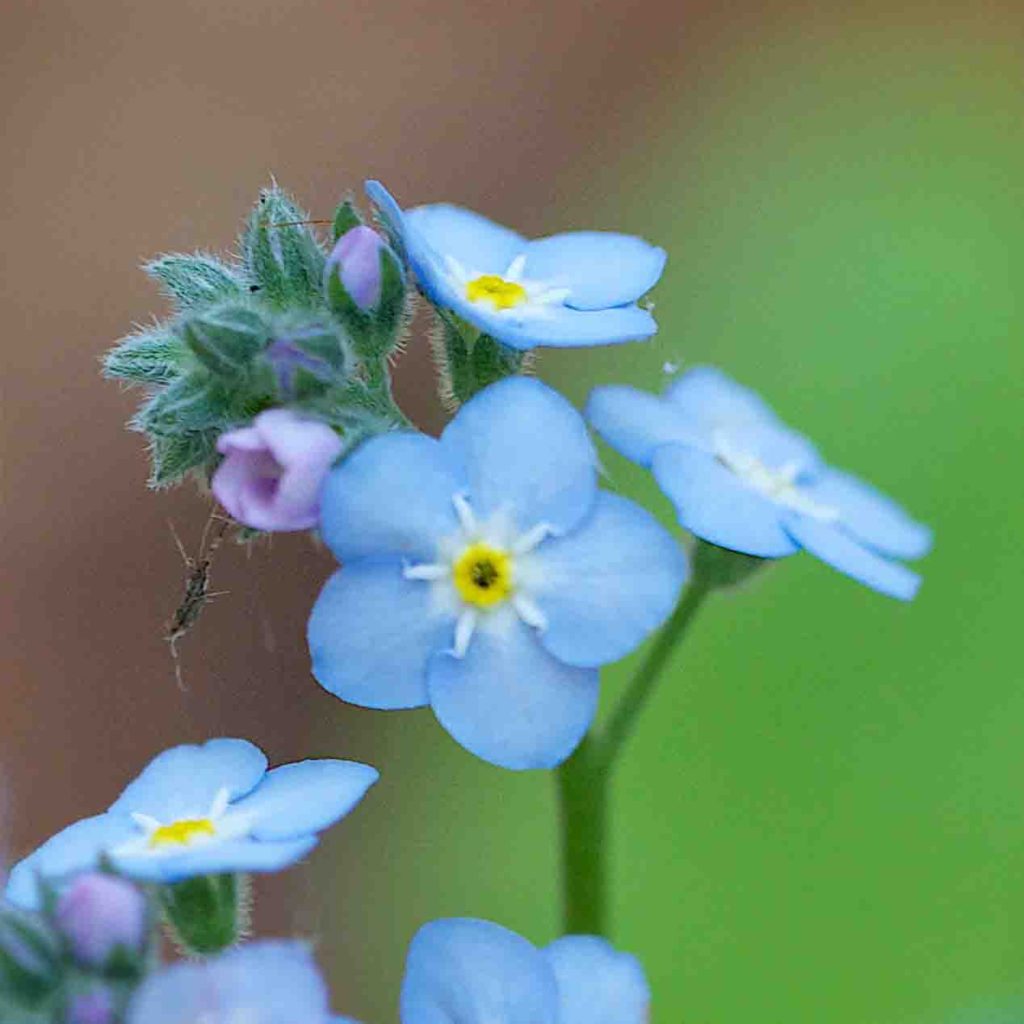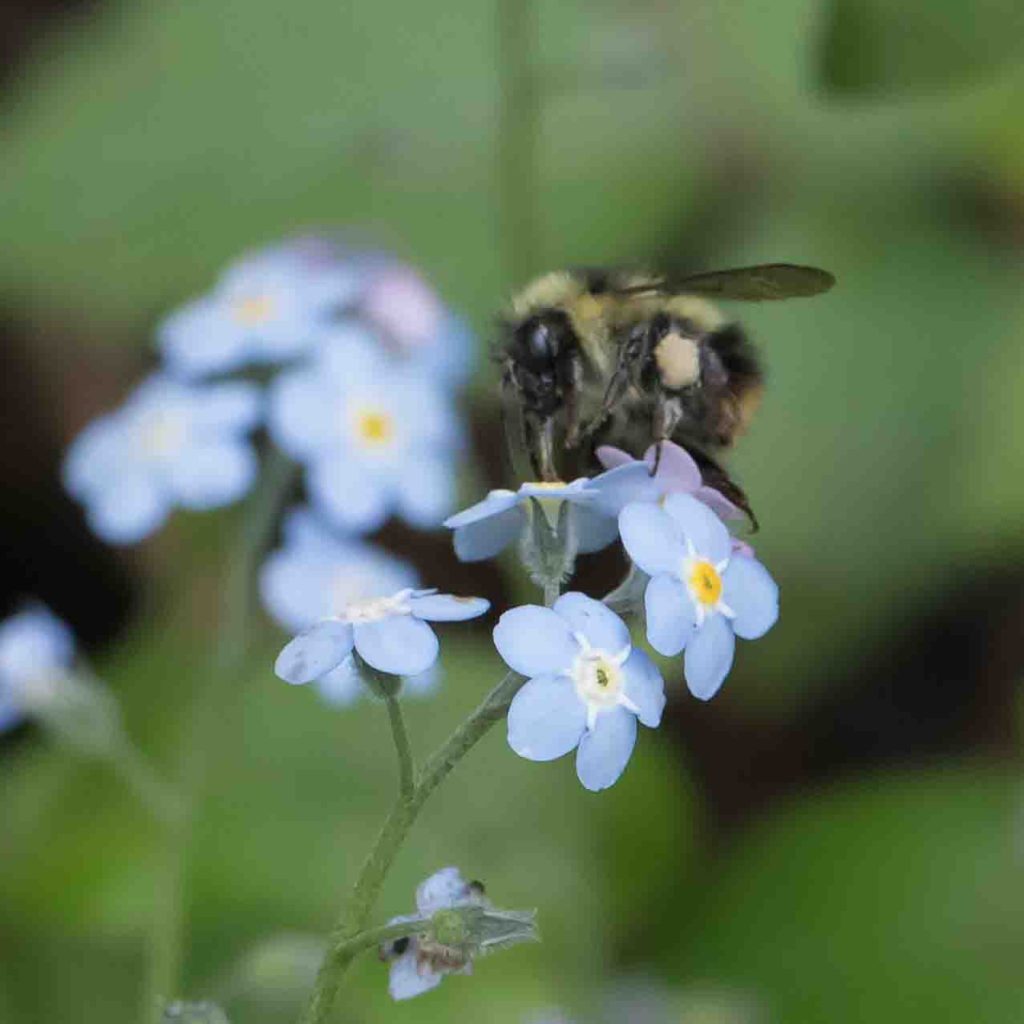Boraginaceae: Borage Family — Miscellaneous
Most members of the Borage family have their flowers arranged in coiled (scorpiod) cymes. They bloom from the base upwards, gradually unfurling like a scorpion’s tail or caterpillar, as new flowers emerge. One plant shown below is no longer in this family, but now belongs to the Heliotrope family (Heliotropiaceae).
Grand Hound’s Tongue – Adelinia grandis (formerly Cynoglossum grande)
Blooms:
Feb–Apr
Plant Height:
15–75 cm
Flower Size:
Small cluster
Origin:
Native
Habitat:
Dry, shaded slopes
Notes:
This is one of the earliest flowers to bloom in spring. It has an erect stem, with coiled clusters of small blue/purple, forget-me-not like flowers with white appendages at the base of the petals. Leaves are mostly basal, each with a long blade reminiscent of a panting dog’s tongue. Fruits have 4 spreading, prickly nutlets.
Pride of Madeira – Echium candicans
Blooms:
Feb–Oct
Plant Height:
1–3 m
Flower Size:
Large cluster
Origin:
Madeira
Invasive?
Yes – limited
Habitat:
Garden escape
Notes:
This is frequently cultivated, and sometimes escapes to become naturalized. A leafy shrub, which tends to become leggy as it ages. Leaves are narrowly elliptic, 6–25 cm long. The inflorescence is a dramatic 15–40 cm tall, tight, elliptic spike with a multitude of bluish-purple flowers. Close examination shows they are in the characteristic coiled form of the Borage family. The attractiveness of the plant diminishes rapidly after flowering. Photos #2 – 4 by CJH.
Tower of Jewels – Echium pininana
Blooms:
May–Aug
Plant Height:
2–3 m
Flower Size:
Large cluster
Origin:
Canary Islands
Habitat:
Garden escape
Notes:
Much less common than Pride of Madeira (Echium candicans, see above), but occasionally escapes to become naturalized. Both leaves and the inflorescence bears a close similarity to Pride of Madeira, but the inflorescence is much taller (> 100 cm). Also, the leaves, in addition to a basal rosette, are clustered densely on the stem right up to the base of the inflorescence.
Changing Forget-me-not – Myosotis discolor
Blooms:
April–July
Plant Height:
10–50 cm
Flower Size:
Small cluster
Origin:
Europe
Habitat:
Roadsides, moist ground, wet meadows
Notes:
A smaller plant than Broad-leaved Forget-me-not (Myosotis latifolia, see below), and with much smaller flowers (1–3 mm diameter compared to 5–10 mm). This gets its name from the flowers, which start out yellow but turn blue (or red) with age, both colors being found on the same inflorescence. Leaves are sparse, the lower leaves oblanceolate, and the cauline leaves linear to oblong.
Broad-leaved Forget-me-not – Myosotis latifolia
Blooms:
Feb–July
Plant Height:
10–60 cm
Flower Size:
Small cluster
Origin:
Northwest Africa
Invasive?
Yes – limited
Habitat:
Sunny, sandy places, woodland
Notes:
This is a small plant with many blue flowers in a coiled cluster, each about 1 cm across. It is similar in shape to others in the Borage family, such as Hound’s Tongue and popcornflowers. The lower leaves are generally larger and ovate, the cauline leaves a little smaller and oblong. Photos #3 – 4 by CJH.
